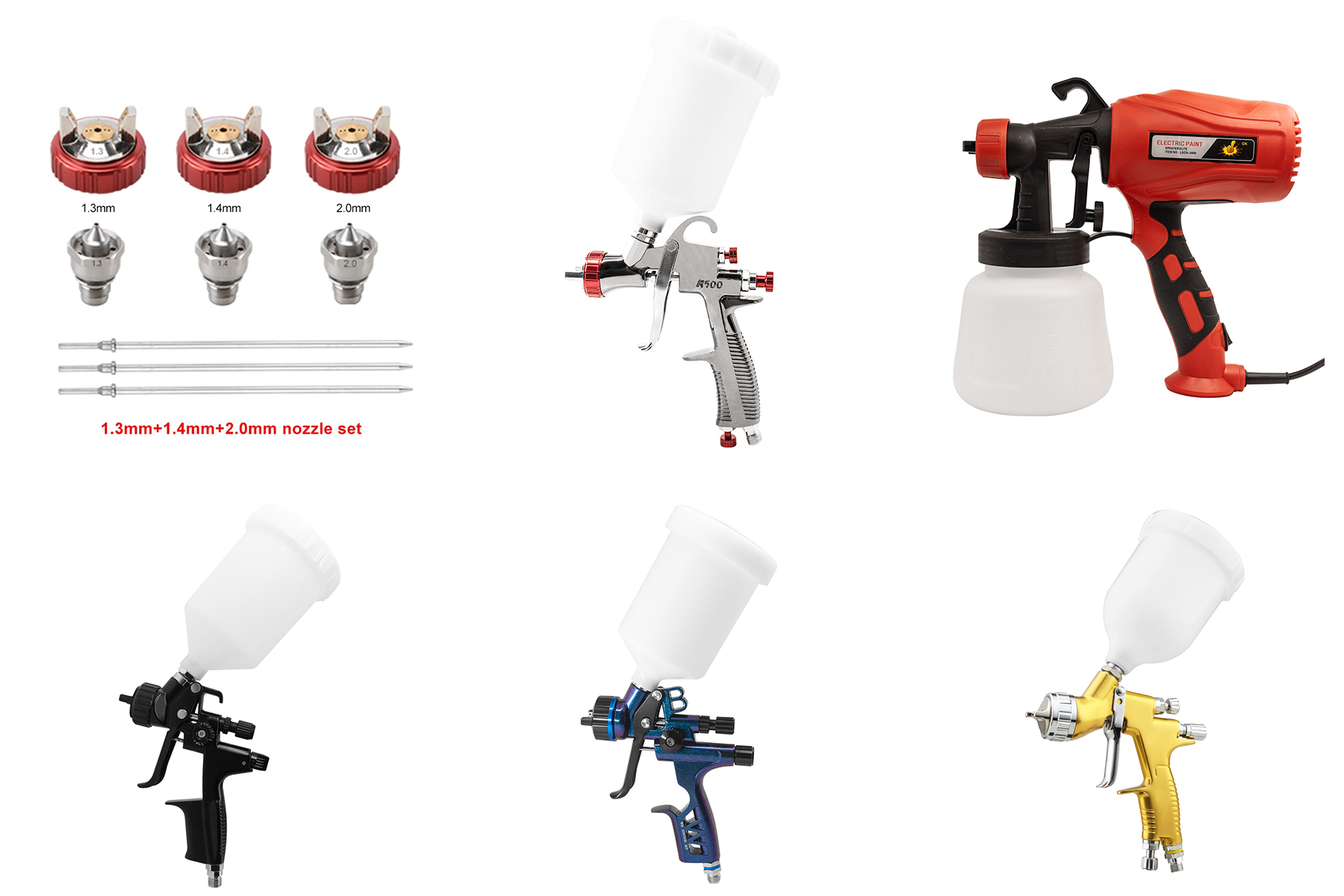
هل HVLP أو LVLP أكثر ملاءمة للمبتدئين؟
بالنسبة لعشاق الأعمال اليدوية والمبتدئين الذين يبحثون عن شيء أسهل في الاستخدام ولا يتطلب الكثير من الجهد لإتقانه، فإن HVLP سيكون خيارًا جيدًا.
ما هو نوع مسدس الرش الأفضل لطلاء السيارات؟
مسدس الرش عالي الحجم ومنخفض الضغط (HVLP): يستخدم مسدس الرش عالي الحجم ومنخفض الضغط ضغط هواء أقل من مسدسات الرش التقليدية، مما يساعد على تقليل الرش الزائد والهدر. وهذا مهم للغاية لتطبيقات السيارات، حيث يمكن أن تكون تكلفة الطلاء مرتفعة. قم بتداخل كل رشة بحوالي 40%، واستمر دائمًا في تحريك مسدس الرش أثناء سحب الزناد. تنطبق نفس القاعدة عند رش طبقات شفافة. عندما تجف هذه الطبقات، فإنها تتماسك لتكوين طبقة ناعمة.
ما هو حجم فوهة مسدس الرش الأفضل لرش السيارة؟
الطبقة العلوية: فوهة 1.3 مم إلى 1.7 مم؛
الطبقة الوسطى: فوهة 1.4 مم إلى 1.6 مم؛
البرايمر: فوهة 1.7 مم إلى 2.2 مم.
ما هو مقدار الضغط اللازم لرش طلاء السيارة؟
عادةً ما يكون مطلوبًا ضاغط بقوة 15 رطل/بوصة مربعة على الأقل، وبالنسبة لبعض التطبيقات، مثل الطلاء الشفاف، يكون ضاغط بقوة 20 أو 25 رطل/بوصة مربعة أكثر ملاءمة. HP: بالنسبة لطلاء رش السيارات، عادةً ما يكون ضاغط بقوة 10 أحصنة كافيًا.
كم جالون من الضاغط مطلوب لرش طلاء السيارة؟
عادةً ما يكون حجم الخزان 50 جالونًا أو أكبر، لذا يجب أن يكون لضاغط الهواء خزان كبير، لأن أجهزة الرش الهوائية تتطلب استخدامًا مستمرًا للهواء المضغوط وتتطلب سعة أكبر. إذا كان لضاغط الهواء خزان أصغر، فسوف يحتاج إلى إعادة تعبئته بشكل متكرر، مما سيؤدي إلى إبطاء العمل وتقليل كفاءة العملية.
هل مسدس الرش الكهربائي مناسب للسيارات؟
مناسب لإصلاح هياكل السيارات والمركبات، وترميم الأثاث، والأسوار، والأبواب، والجدران وتطبيقات البرايمر. لتجنب الرش الزائد الذي ينتشر خارج المنطقة المستهدفة المقصودة، يوصى باستخدام تقنيات التغطية والتغطية المناسبة للتعامل مع هذه المشكلة، مع ضمان حماية الأسطح القريبة.
كيفية طلاء السيارة بشكل صحيح؟
1. رمل السطح؛
2. تنظيف وتجهيز المنطقة المراد طلائها؛
3. قم بتغطية المناطق التي تحتاج إلى حمايتها؛
4. قم بالتحضير والتنظيف مرة أخرى قبل الطلاء؛
5. امزج ورسم.
ما الذي يجب تجنبه عند الرش؟
لضمان الحصول على نتيجة جيدة، تجنب بعض الأخطاء الشائعة التالية عند رش الطلاء:
> عدم تطابق الألوان؛
> تجاهل الاتجاهات؛
> عدم إعداد السطح؛
> ترك الغبار يتدخل؛
> وضع الطبقات في نفس الاتجاه؛
> نسيان المعطف الواقي؛
> وضع طبقة سميكة واحدة؛
> عدم توفير وقت تجفيف كافٍ.




